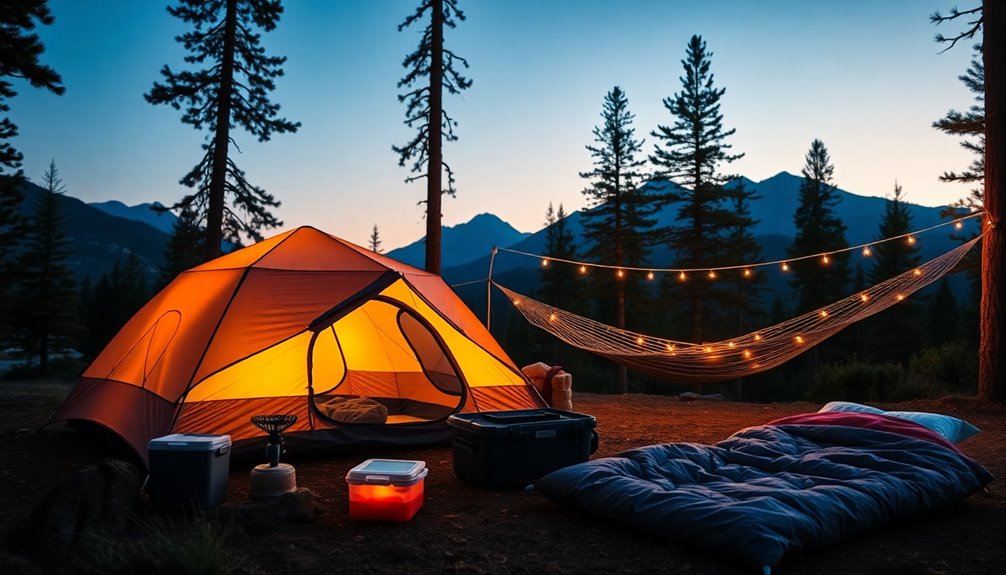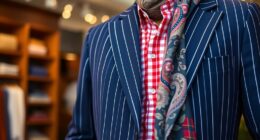Legendary editorials have shaped fashion by challenging traditional beauty norms and reflecting cultural shifts. Think of Richard Avedon's striking "Dovima with Elephants," which captured both elegance and raw emotion, or Naomi Campbell's groundbreaking Vogue cover that promoted diversity. These editorials won't just showcase clothes; they tell stories and influence societal values. By pushing boundaries, they create a dialogue about identity and representation in the fashion world. The impact of these visuals goes beyond mere trends, and as you explore further, you'll uncover more fascinating stories that highlight the ever-evolving nature of fashion.
Key Takeaways
- Richard Avedon's "Dovima with Elephants" blended elegance and emotion, capturing a cultural moment in fashion history.
- Helmut Newton's provocative imagery in editorial spreads challenged traditional beauty standards and showcased empowered women.
- Edward Steichen's innovative approach redefined fashion photography, merging fine art with clothing to elevate visual storytelling.
- Iconic editorials reflect societal values, with designs responding to historical events and cultural shifts throughout the decades.
- Naomi Campbell's groundbreaking Vogue cover in 1990 marked a significant moment for diversity in fashion representation.
Pioneering Fashion Photographers
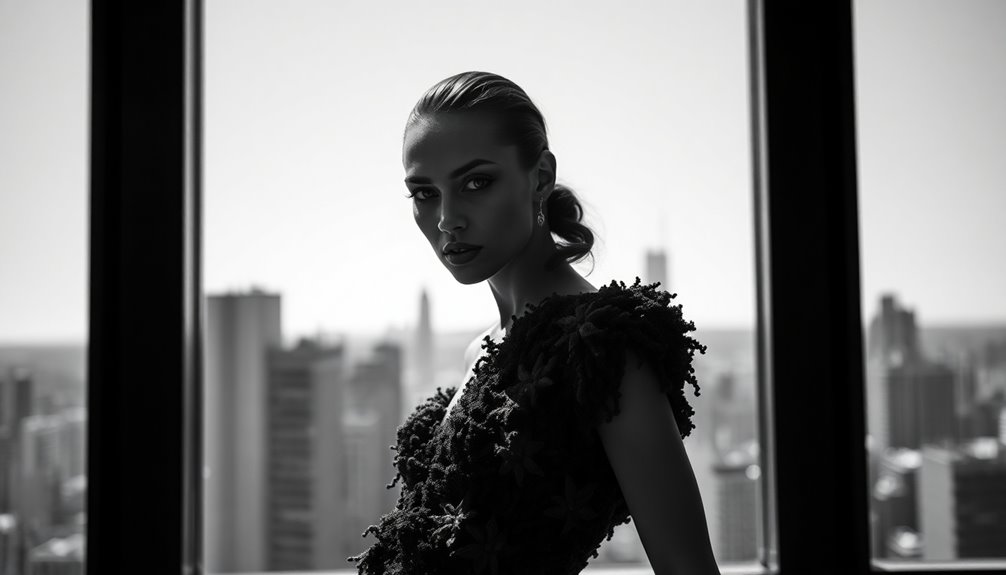
When it comes to the evolution of fashion photography, pioneering photographers have truly shaped the industry with their innovative approaches and artistic visions.
You can't overlook Edward Steichen, who fused fine art with fashion, employing groundbreaking techniques that captivated American audiences.
Helmut Newton pushed boundaries with his provocative imagery, showcasing strong women and subverting traditional roles, while Irving Penn's minimalist style highlighted elegance and simplicity.
These photographers didn't just capture clothing; they crafted narratives, influencing trends and ideals.
Their distinct perspectives paved the way for future generations, inspiring you to see fashion photography as an art form that reflects both beauty and social commentary.
Embracing their legacies allows you to appreciate the depth of fashion's visual storytelling.
Transformative Fashion Editorials

Pioneering photographers laid the groundwork for transformative fashion editorials that shifted the landscape of the industry.
You've likely seen Richard Avedon's iconic work, where models stepped out of studios and into real-world settings, blending elegance with raw emotion. His images, like Dovima with Elephants, captured not just fashion but a cultural moment.
These editorials often tackled societal issues, challenging traditional beauty standards and inspiring discussions about identity and representation.
As you explore these transformative pieces, notice how they reflect the zeitgeist, pushing boundaries and redefining norms.
Each shot tells a story, inviting you to see fashion as a powerful lens through which cultural shifts unfold, making you reconsider the role of style in everyday life.
Role of Fashion Magazines
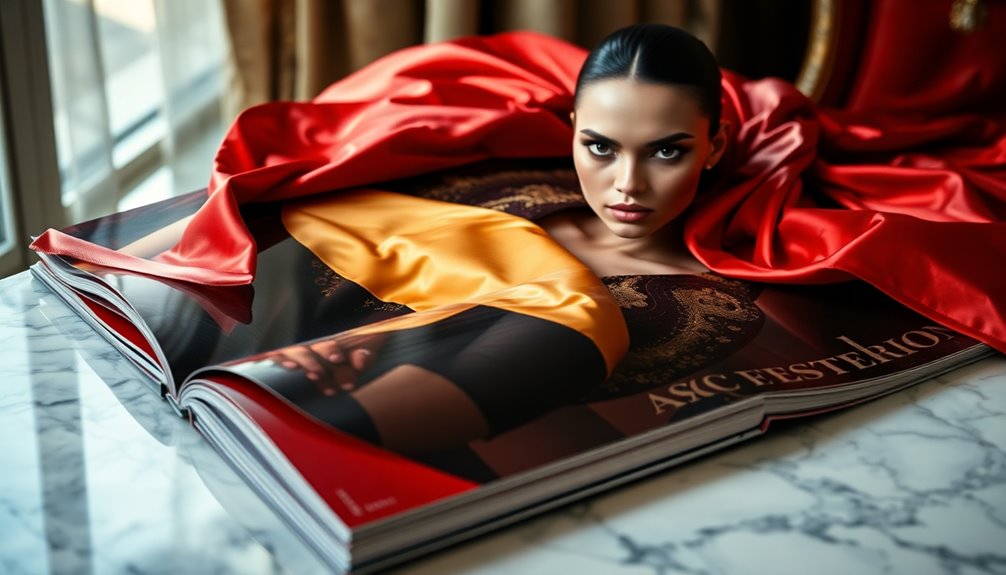
Fashion magazines have long played a pivotal role in shaping the landscape of style and beauty. They serve as platforms for groundbreaking photography, showcasing the work of visionary artists who capture the essence of fashion.
Through striking editorials, these magazines influence public perception and establish trends that resonate in contemporary culture. You'll find that they not only present fashion but also provide a space for cultural commentary, reflecting societal values and shifts.
By highlighting diverse voices and perspectives, fashion magazines push boundaries and challenge traditional standards. Ultimately, they shape consumer behavior, guiding what's considered desirable and trendy in the fashion industry.
Their impact is far-reaching, making them essential to the evolution of style and beauty.
Iconic Models in Fashion

Iconic models have substantially influenced the fashion industry, shaping trends and redefining beauty standards. Their presence on runways and magazine covers has made a lasting impact, inspiring future generations.
Here are three models who changed the game:
- Naomi Campbell – With her powerful runway presence, she showcased diversity and became a symbol of the supermodel era.
- Twiggy – Her unique look epitomized the 1960s, challenging traditional beauty norms and popularizing the "London Look."
- Linda Evangelista – Known for her versatility, she revolutionized the modeling industry with daring styles, including her iconic haircut dubbed "The Linda."
These models didn't just walk the runway; they transformed the perception of beauty and influenced countless aspiring fashionistas.
Influential Fashion Moments
What defines a truly influential fashion moment? It's often a convergence of artistry, culture, and societal impact. These moments transcend mere aesthetics, shaping trends and inspiring generations. From Gloria Swanson's haunting 1924 portrait to Princess Diana's transformative "revenge dress," each instance reflects deeper narratives. Here's a look at some defining moments in fashion history:
| Fashion Moment | Year | Cultural Impact |
|---|---|---|
| Gloria Swanson's Portrait | 1924 | Redefined glamour in photography |
| Twiggy's London Look | 1960s | Sparked the mod fashion craze |
| Diana's Revenge Dress | 1994 | Challenged royal fashion norms |
| Naomi Campbell's Vogue Cover | 1990 | Broke barriers for diversity |
| Linda Evangelista's Short Hair | 1980s | Influenced hairstyles globally |
These moments remind you of fashion's power to inspire and provoke thought.
Evolution of Fashion Photography
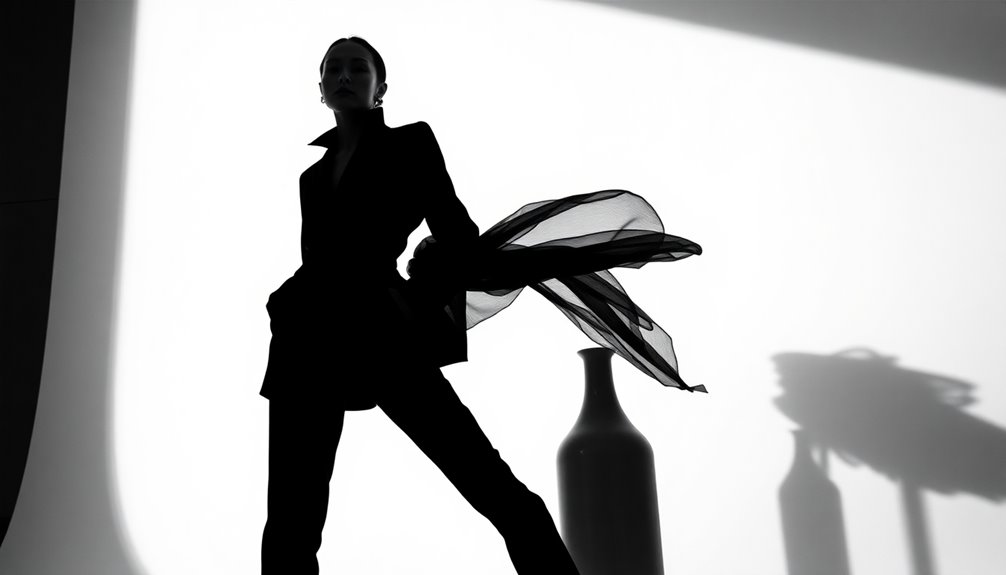
How has the landscape of fashion photography changed over the years?
It's evolved markedly, shifting from rigid studio settings to vibrant real-world locations that tell a story.
Photographers now focus on capturing human emotion rather than just showcasing clothing, making images more relatable and engaging.
Here are three key changes in fashion photography:
- Authenticity Over Artifice: Real-world settings bring authenticity, making fashion feel more accessible.
- Emotional Storytelling: The narrative behind each photo has become vital, enhancing connection with the audience.
- Diverse Perspectives: A wider range of voices and backgrounds enriches the fashion narrative, reflecting today's society.
These shifts have transformed how we perceive and experience fashion photography today.
Technology's Impact on Fashion
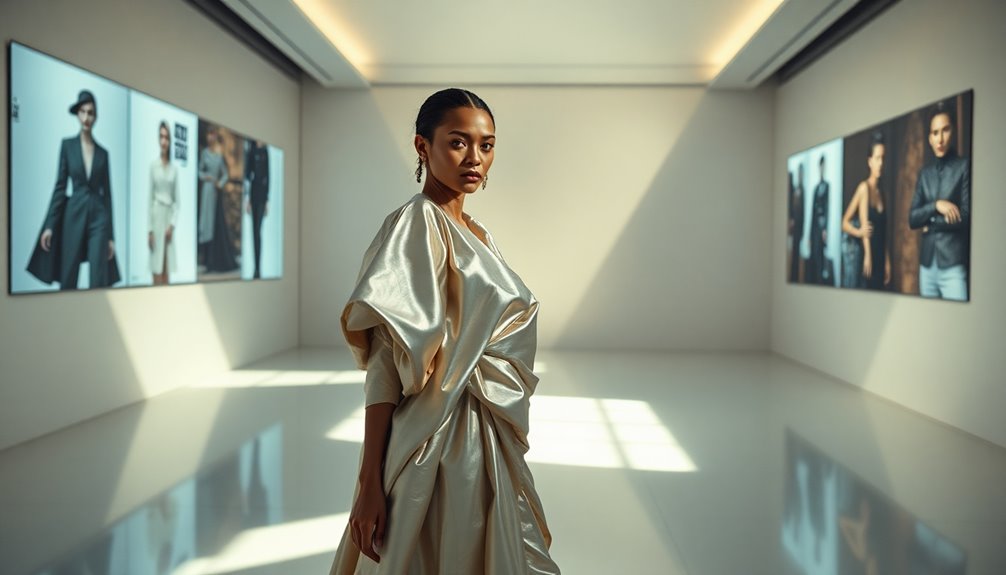
With the rise of digital technology, fashion photography has undergone a dramatic transformation, reshaping the way images are created and consumed.
You'll notice how digital cameras offer instant feedback, allowing photographers to experiment freely and capture the perfect shot on the spot. Editing software has released new creative possibilities, enabling you to manipulate images like never before.
Social media platforms, like Instagram, have revolutionized how fashion photography is shared, making it more accessible and immediate. You can now discover trends in real-time and engage with content that resonates with you.
Online magazines have expanded the reach of fashion photography beyond traditional print, ensuring that diverse perspectives and styles continually evolve, reflecting the dynamic nature of the fashion world.
Iconic Fashion Designers
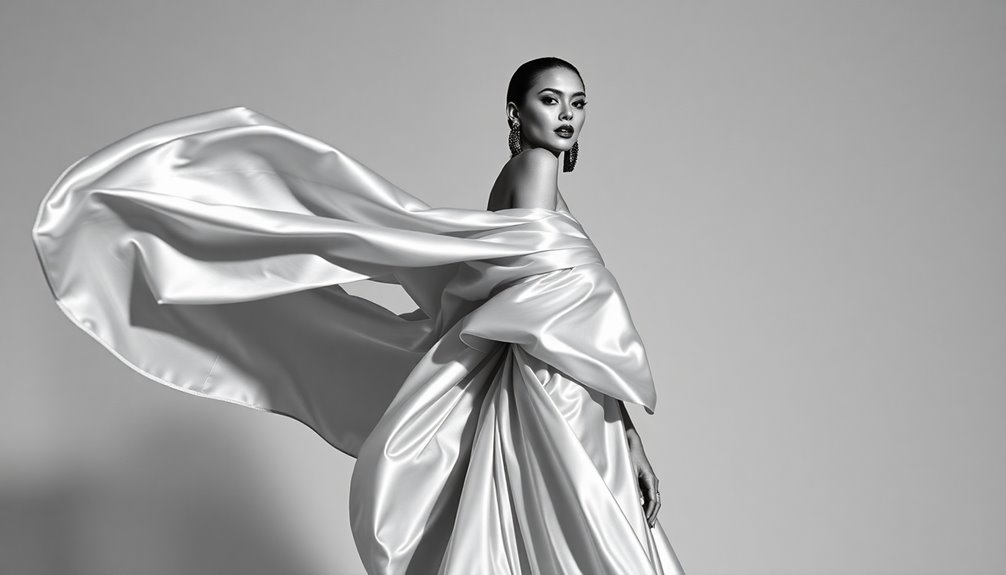
Iconic fashion designers shape the industry with their visionary creativity and unique aesthetics. Their work not only defines trends but also influences culture and society.
Here are three designers who left an indelible mark:
- Coco Chanel: Revolutionized women's fashion by introducing elegance and comfort, breaking free from corsets with her timeless pieces like the little black dress.
- Christian Dior: Known for the "New Look," he redefined femininity in the post-war era with luxurious fabrics and voluminous silhouettes, celebrating curves.
- Yves Saint Laurent: Pioneered ready-to-wear and brought the tuxedo suit to women, challenging gender norms and empowering them through fashion.
These designers pushed boundaries, inspiring generations and reshaping the world of style.
Their legacies continue to inspire creativity and innovation in fashion today.
Unique Aesthetics in Photography
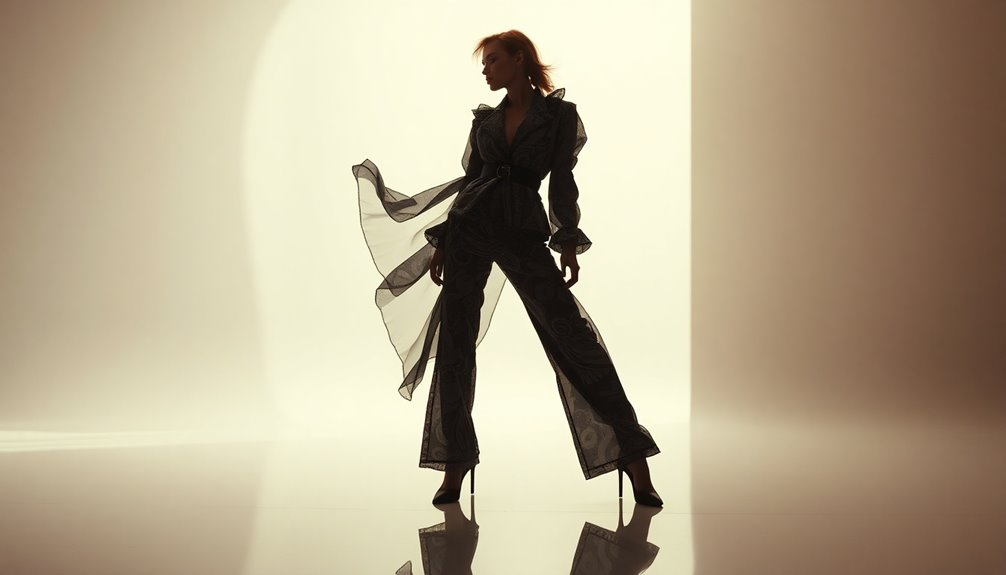
Unique aesthetics in photography capture the essence of a moment, transcending mere representation to evoke emotion and provoke thought.
You'll notice how the use of light, color, and composition can transform an image, inviting viewers to see beyond the surface.
Photographers like Helmut Newton and Irving Penn crafted distinctive styles that challenged conventions, merging art with fashion.
Newton's provocative imagery explored power dynamics, while Penn's minimalist approach emphasized elegance and simplicity.
Each choice, from the model's pose to the background, contributes to a narrative that resonates deeply.
By embracing unique aesthetics, photographers not only shape visual culture but also inspire you to reflect on beauty, identity, and the world around you.
Their work continues to influence the evolving landscape of fashion photography.
Cultural Reflections in Fashion
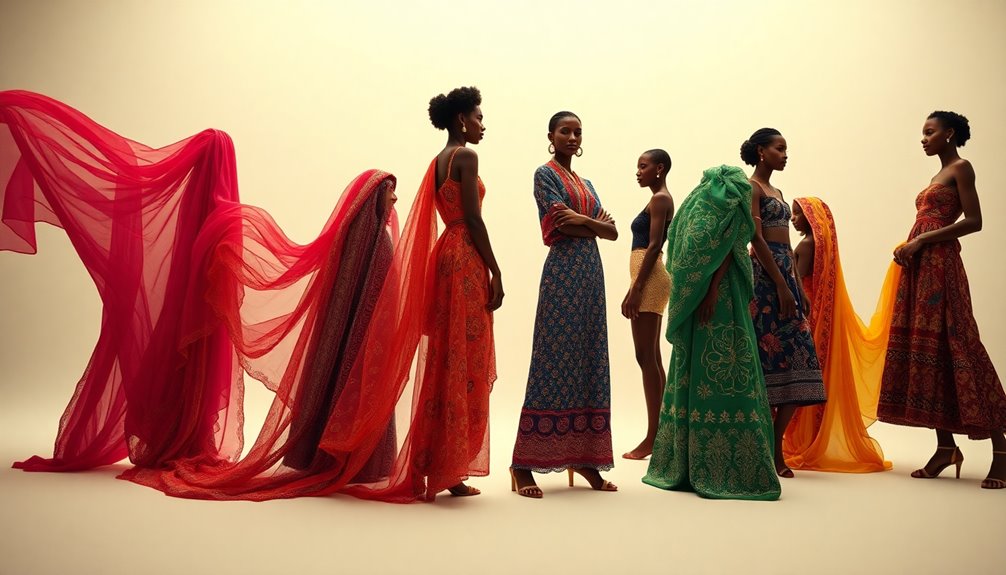
Fashion isn't just about clothing; it's a powerful reflection of culture and society. It captures the essence of our times, showcasing shifts in values, attitudes, and identity. When you look closely, you can see how fashion acts as a mirror, revealing the world around us.
- Social Movements: Fashion often embodies the spirit of social change, from the flapper dresses of the 1920s to today's sustainable fashion initiatives.
- Cultural Diversity: Styles draw inspiration from various cultures, promoting inclusion and celebrating diversity in representation.
- Historical Context: Fashion trends frequently respond to historical events, whether it's wartime utility or the rebellious styles of youth culture.
Through these lenses, you can truly appreciate fashion's role in shaping and reflecting our collective identity.
Frequently Asked Questions
How Do Fashion Editorial Themes Change With Societal Trends?
Fashion editorial themes change with societal trends by reflecting current values, beliefs, and cultural shifts.
You'll notice how themes evolve, driven by movements like feminism, diversity, and sustainability. For instance, as body positivity gains momentum, you see more inclusive representations in editorials.
When societal norms shift, photographers and designers adapt their visions, ensuring that fashion stays relevant and connected to the world around you.
This dynamic relationship shapes the ever-evolving landscape of fashion imagery.
What Is the Role of Styling in Impactful Editorials?
Styling plays an essential role in impactful editorials by setting the tone and conveying a narrative.
You create visual stories through clothing choices, accessories, and makeup, which resonate with the audience. Well-executed styling can evoke emotions, highlight cultural themes, and showcase the designer's vision.
How Do Photographers Collaborate With Models During Shoots?
During shoots, photographers collaborate closely with models to create compelling visuals.
You'll guide them on poses and expressions, ensuring they feel comfortable and confident. Communication is key, as you discuss concepts and share feedback in real-time.
This teamwork helps capture the intended mood and style. By fostering a relaxed atmosphere, you encourage spontaneity, allowing the model's personality to shine through, which ultimately enhances the storytelling aspect of the shoot.
What Criteria Determine a Fashion Editorial's Success?
Did you know that 70% of consumers make purchasing decisions based on visual content?
A fashion editorial's success hinges on several criteria.
You'll want to take into account the creativity and originality of the concept, the quality of photography, and how effectively it tells a story.
Strong styling and model selection are essential, too.
Additionally, the editorial should resonate with current trends and engage its target audience, ensuring it leaves a lasting impression.
How Do Fashion Editorials Influence Consumer Purchasing Decisions?
Fashion editorials influence your purchasing decisions by showcasing trends and styles that resonate with you.
They create a visual narrative that highlights products in aspirational settings, making them desirable.
When you see a model styled in a stunning outfit, it sparks inspiration and prompts you to seek those pieces for yourself.
Additionally, editorials often feature endorsements from influencers, further shaping your perception of what's fashionable and worth buying.
Conclusion
As you wrap up your journey through these legendary editorials, it's clear that fashion is more than just clothes—it's a powerful medium for storytelling and cultural reflection. From the lens of iconic photographers to the bold expressions of supermodels, each moment has left an indelible mark on history. Just like scrolling through your Instagram feed today, these visuals continue to inspire and provoke thought, reminding us that style is ever-evolving and always relevant.

